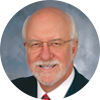Postgraduate education in chiropractic is almost as old as the profession itself, and requirements for postdoctoral continuing education as a condition for re-licensure of chiropractors date at least to the 1930s.1 Within this context, instruction in Activator Methods Chiropractic Technique (AMCT) and related topics are relatively new, dating only to 1967.
Chiropractors attend postgraduate seminars for a variety of reasons. For some, postdoctoral coursework may be no more than a means of keeping one's license valid. A more conscientious majority, I'm pleased to observe, display a genuine desire to learn, whether it's the intricacies of AMCT or some of the other content we've offered over the years, such as the use of outcomes measurements, better record-keeping, or the latest in radiographic technique. Of course, clinical technique has always been our forte, and we've tried to upgrade our field practitioners with new developments as research has evolved. However, as the prominent Swedish researcher Gunnar Anderson, MD, often asks at the annual ISSLS (International Society for the Study of the Lumbar Spine) conferences, "So what?" His concern, like mine, goes to the relevance of the material to the care that doctors render to patients.
My concerns go beyond the clinical relevance of the instructional content of postgraduate seminars. I'm all too familiar with that subset of doctors who sit in the back reading the newspaper while they collect their 12 hours of re-licensure credit. The spine hasn't changed since they graduated, they reason, and so continuing education is considered a nuisance to be endured, rather than something that might contribute to the quality of the care they provide to patients. These folks are a minority to be sure, but they're out there.
Our concern at Activator Methods International is not merely with the content of our seminars, but also with the learning that we hope takes place. We would like to know whether doctors actually take away something meaningful from what we teach. We don't yet offer post-seminar self-assessments for all our post-doctoral students, but we do require that those desiring certification as proficient in AMCT pass written and practical examinations before proficiency rating is awarded. And we require annual re-certification of our instructors each year as a condition for their continued role as teachers of AMCT. It's my contention that if we can't measure the skills of our instructors, we can't hope to offer a consistent and quality educational product to the field.
We have good reason to believe that AMCT procedures can be learned and that doctors can be trained to a standard that insures greater uniformity in the service they render to patients. An as yet unpublished study by instructor Janeen Wallace, DC, of New York Chiropractic College, has suggested significant improvement in interexaminer reliability of leg-length evaluations among her predoctoral students during a semester of training. It is my hope that we will see continuing educational research so as to improve the ways in which we pass along our clinical skills to future generations of doctors.
Of course, we must be prepared to modify the standard(s) of clinical proficiency at which we aim in accordance with ongoing research findings. What is considered acceptable practice today may well change as clinical research teases out that which is valid, useful and practical from that which makes no difference or causes harm to patients. But here, too, it is the measurement process inherent in clinical research that allows us to modify the content of our educational offerings. "If you can't measure it, you can't manage it."
There is a movement afoot to establish a national certification program for postgraduate education in chiropractic. Some folks think this offers the profession an opportunity to improve the quality of re-licensure seminars, while others express fear that the movement is an effort to limit and restrict what is taught. My attitude is that a voluntary program involving a measurement process to evaluate the quality and relevance of instructional offerings is hard to argue against. Part of this measurement process, I suggest, ought to be focused on the question of what (and how much) is actually learned in any seminar series that is offered to the field. This will require that approved programs come up for re-evaluation on some periodic basis. In other words, the endorsement given to any particular postgraduate offering ought to be based in part on how well or poorly the course actually accomplishes the instructional goals it sets for itself.
I'm sure some folks will think that this is just more paperwork, more bureaucracy, more distraction from the heart and soul of chiropractic. I might have thought so myself 40 years ago, but experience has taught me that anything worth doing is worth doing well. And when it comes to postgraduate education in chiropractic, I don't know how we can be confident of quality unless we measure what actually goes on. "If you can't measure it, you can't manage it."
Reference
- Watkins, CO. The new offensive will bring sound professional advancement. The Chiropractic Journal (NCA) 1934 (June); 3(6): 5-6, 33
Arlan Fuhr, DC
Phoenix, Arizona
Click here for previous articles by Arlan Fuhr, DC.





